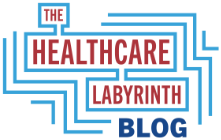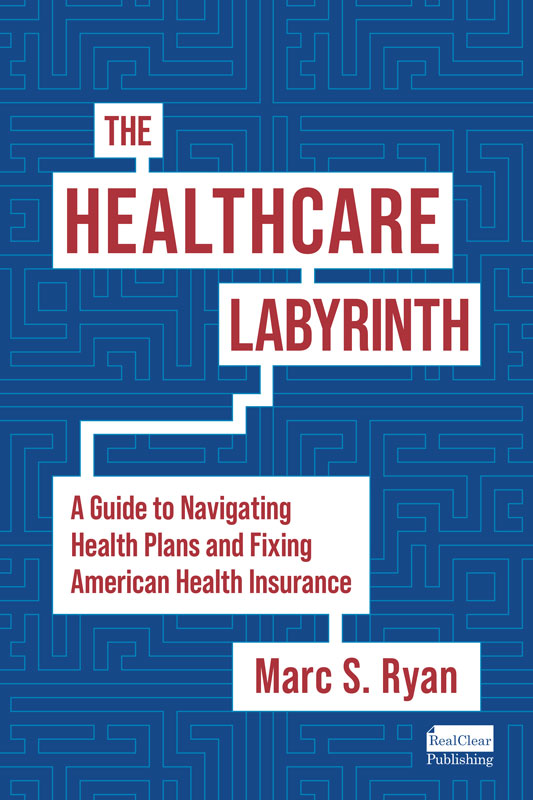Mark Cuban is known as a bold entrepreneur — a smart-thinking guy who cuts through all the nonsense to come up with the right solution. But how audacious was he at a recent White House forum when he suggested that federal and state programs as well as employers essentially cut the top three pharmacy benefits managers (PBMs) out of the pharmacy spending equation altogether in favor of a transparent model? However difficult in the short term, I believe the provocative Cuban has the right answer and wants to aggressively go after it.
The entrepreneur is a recent entrant into the world of healthcare. His Cost Plus Drug Company (CPD or Cost Plus) is taking the nation by storm by showing how going direct to the manufacturer — and then to the consumer — can make money and lower costs. He would argue it is not a new model in free enterprise, just that the anti-competition actors in the drug world never wanted it. He is right.
Cost Plus
Cost Plus has gained over 2 million client consumers by offering a clear and transparent purchase model for generic drugs. It is easy to understand – the drug’s cost, a percentage add-on for Cost Plus’ admin and profit, a small pharmacy dispensing fee, and a small shipping fee. Good Americans do not besmirch others for wanting to make a profit as long as the product is low-cost or has value. And that is why his model is a success. Americans know what they are getting – a clear and reasonable price, mail-order convenience, and consistency. A bit like the Walmart price signs seen throughout the superstore.
The transparency movement
Cuban is part of a multi-faceted transparency movement within the drug world. It has risen to relative prominence over the immense frustration with price and how opaque the drug system really is. In several earlier blogs and a podcast, I have gone through the problems with the current system, existing opportunities, what the transparency movement is, and the key players. They are pasted below for your review. In the blog on PBM transparency, I tell you about traditional PBMs, transparent PBMs, and other actors like Cuban who are looking to upend the system.
Drug Price Blogs:
https://www.healthcarelabyrinth.com/the-insanity-of-drug-pricing-and-shortages-a-christmas-story/
Drug Price Podcast:
Cuban buys directly from generic manufacturers (CPD acts as its own wholesaler for about 2,500 generics). This cuts out traditional wholesalers, PBMs (to some degree), and pharmacies (CPD is its own pharmacy as well). This is easy with generic drugs. CPD is now introducing biosimilars (a type of generic for expensive biologic drugs). It is also entering the manufacturing game, in part to deal with drug shortages (caused in large measure by the opaque system we have).
The brand rebate barrier
Cuban’s proposal faces barriers on the brand drug side, where rebate relationships dominate the system. These are arrangements to lower the list/gross price to a net price (after rebate, which are collected well after drug transactions occur). The brand drug makers grant the discount for favorable placement on a PBM or health plan drug formulary/list – at the expense of other related brand drugs (they are excluded from the list) as well as sometimes at the expense of lower-cost generic drugs. Further complicating Cuban’s efforts is the fact that the big three PBMs – CVS’ Caremark, Cigna’s Express Scripts, and United’s Optum Rx – control 80% of the PBM volume. Breaking that juggernaut will be hard. Cuban is trying to work with brand drug makers but is facing hesitation from them due to both the drug makers’ and traditional PBMs’ addiction to rebates (especially among the big three). Transparency PBMs are having some of the same issues gaining traction here.
But Cuban is right to try. While the forces in the drug supply channel say they have good intentions and want to reform, change seems fleeting and often is forced by regulators or lawmakers with bully pulpits. Recently, after being forced to dramatically cut its insulin prices due to congressional pressure (thank you Bernie!), Novo Nordisk said it would stop selling a popular insulin in the U.S. It will continue to sell the insulin in other developed countries. (How is this possible? Has Novo abandoned morality in its business decision-making?)
Why would brand drug makers and PBMs change?
In Cuban’s world, there would be no rebates for brand drugs and things would operate much like generic pricing does. So why would brand drug makers and PBMs do this? They each lose critical leverage in the process.
In a perfect world, drug makers compete on the price and the quality or outcomes of their drugs. But drug makers have thrived well in a dark world where they use rebate agreements, patents, lawsuits, marketing, acquisitions, secret agreements with other players, and a labyrinthine drug approval process to their benefit. They have mastered living in the anti-competitive shadows that distort the system. Will they be so willing to give it all up to compete honestly, especially when margins now are huge and the best in healthcare?
At the same time, the massive consolidation of PBMs over the years has not created the incentives for the Big 3 to reform, either. The system serves them well. Yes, they have introduced transparency models, but these have been more after-thoughts than driving business principles. I will say there is hope that forward-looking and innovative leaders at the Big 3, such as Karen Lynch at CVS Health, could successfully change their PBM models.
The role of Medicare drug price negotiations
Meanwhile, Cuban and similar parties are finding ways to chip away at the lack of transparency and bring direct-to-consumer further down the road for generics, biosimilars, and (in time) brands. But enter the Inflation Reduction Act’s Medicare drug price negotiations. This nemesis of Big Pharma (or maybe that’s really President Biden) actually could usher in the rapid change Cuban is looking for. Pure and simple: the Biden law threatens the concept of rebates.
The first ten drugs in Medicare are being negotiated now for pricing in 2026. Under the law, up to sixty drugs in the Part D and Part B world can be negotiated over time. If Biden has his way, the law would be expanded and up to five hundred drugs would be negotiated over a decade. Biden could force down the price of certain drugs so dramatically that rebates as we know them will dissipate – not just on the drugs subject to negotiation but on others in the same class or related classes due to the fallout. It will take some time, but it will create a world where we have something akin to a net price from the beginning. The drug price negotiations should be extended to the commercial world, but Medicare drug prices could move the commercial world to transparency even without that. All this is important in the brand drug world for forces like Cuban to succeed and because rebates are paid retrospectively. In many cases, consumers pay their cost-sharing based on the gross price at the point of sale and not net of a rebate. This causes financial misery for those with multiple co-morbidities and on expensive medications.
Cuban’s other reforms
Cuban also said state and federal healthcare programs should contract with smaller PBMs (likely transparent ones), adopt single formularies for Medicaid, and have one PBM serve the Medicaid program in each state. Medicaid has fashioned a framework that has some of the elements Cuban likes and what is practiced in other developed countries. The Medicaid rebate program collects retrospective rebates from brand drug makers from both fee-for-service and managed care lives. State and federal rebates are major. Where states have set up single formularies and centralized approaches, formulary committees decide what should be on the formulary from a cost and clinical approach. In effect, a net cost basis is arrived at universally in the state’s program. The retrospective nature does not impact consumers here as there are no or only small copays in Medicaid.
Seize the initiative
I like Cuban’s boldness. He argues that using transparent PBMs and forcing brand drug makers to offer net prices upfront would work. For sure, there are challenges in terms of speed and success. Healthcare is mired in acquiescence. The Medicare drug price reform act will help move things along. But let’s not wait. It is time to try Cuban’s ideas, have government further push down the road of drug price negotiations, and have committed healthcare actors embrace drug price transparency reforms. Indeed, Blue Shield of California (BSC) is embracing a radical remake of its pharmacy program for commercial products (at first). BSC is looking to move to a transparent model and has chosen key innovators (including Cuban’s CPD) to revolutionize its approach to drug spending. It is the first of its kind in the traditional payer world. Other insurers and employers are contracting with CPD in a smaller way as well. Some employers have gotten the message and are dropping traditional PBMs in favor of transparent ones.
In defense of some of what PBMs do
Mind you, I am a defender of PBMs to a degree. A slick marketing and lobbying campaign by Big Pharma has put a political target on PBMs’ back in an effort to divert attention from the brand drug makers. As well, my GOP party has in essence been bought and sold by Big Pharma. The singling out of PBMs as the main culprit is unfair. I do hate the PBMs’ opaqueness and the ugly leverage they use in the market (e.g., spread pricing and clawbacks that hurt pharmacies). But PBMs do serve a good purpose in prior authorization, network quality, and more. Without these sophisticated and knowledgeable watchdogs, drug costs would be even more out of control. Specific to the PA issue, lower prices alone are not a cure for the over-utilization driven by many sloppy docs and all the greedy drug makers. Proper and accountable PA should not be a bad word in healthcare. It is important.
Conclusion
In the end, change will be slow but sure. Cuban and a bunch of other innovators will boldly go where no one has gone before and bring transparency and better tech to the equation. (The biggest PBMs are mired in legacy tech, which holds them back as well.) PBMs in some form and perhaps by a different name will be important in my view. They will morph into value-added, tech-savvy partners within the new model. Over time, the hope is that the new PBMs may facilitate price transparency as well as provide important value add-ons in the areas of PA, quality, and analytics – without all the skullduggery and chicanery in which they engage today with brand drug makers.
#drugpricing #pbms #branddrugmakers #ira #medicare #cuban
— Marc S. Ryan





